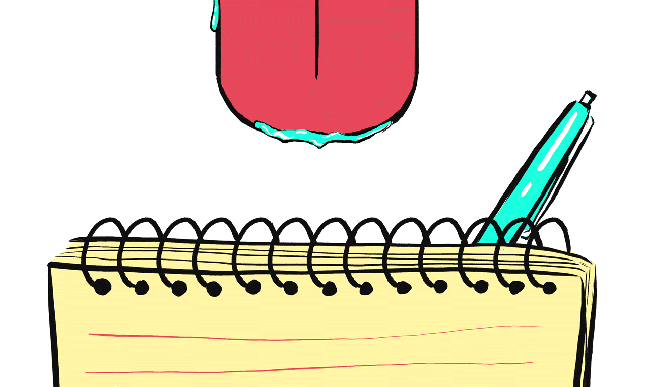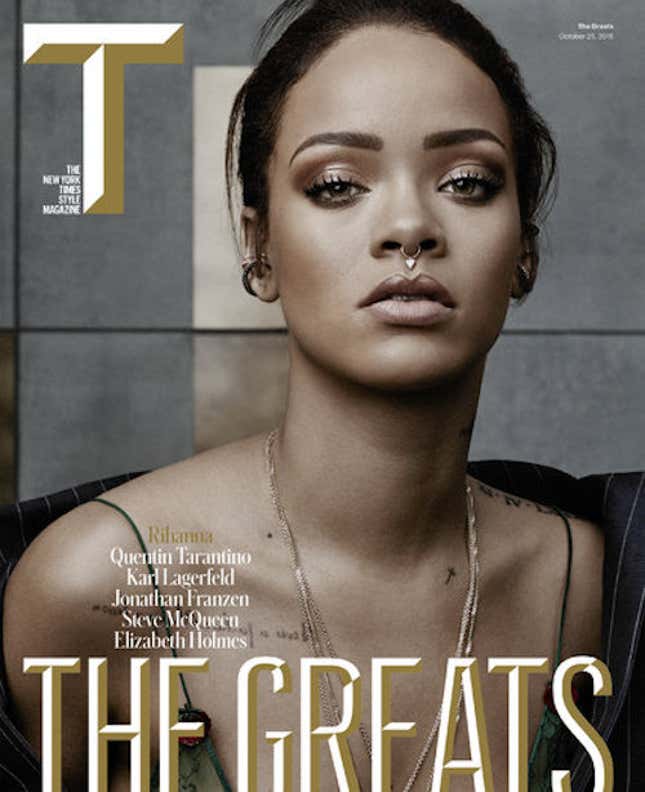Year of the Fanboy Profile: Writers Fawning Over Subjects Because They Don't Have a Choice
Latest

Five years ago, I was an editor at Vibe, and I got an assignment to interview Usher. It was my second time profiling him for a cover story, but this setting would be more intimate than the previous one—instead of meeting in a hotel conference room, we’d talk at an outdoor bar at the Sunset Marquis in Hollywood, just the two of us. We talked about music, career failure, fantasies and sex. “You think I have sex appeal?” he asked me, at one point. “Of course,” I replied. I moved on quickly. I had to bury the crush I’d had on him since “Make Me Wanna” and ignore the fact that the first concert I’d ever been to was his 8701 Tour in 2001. I played it straight to be professional. Had I interviewed him today, there’d likely be a different agenda at play.
The July 2015 issue of Elle features a strategically sexy photo of Friday Night Lights’ Taylor Kitsch, who stares back at you with brows strategically arched and one hand on his cheek. Every magazine editor aspires to run this kind of photograph, in which the subject makes penetrating eye contact with the reader and, in this case, the writer, Lili Anolik, who wrote a profile called “Taylor Kitsch Lives Up to Our Fantasies.” Anolik is a Kitsch disciple who unabashedly and proudly writes through a lens of fandom. The result is equal parts alluring and discomforting.
Anolik, who’s also a Vanity Fair contributing editor, invokes the YA narrative overtly:
“As he walks toward me, I stand, my heart kicking in my chest. I’m nervous. This is a high-stakes game for me: FNL is my favorite show, Riggins my favorite character. I’m afraid that Kitsch is going to be a world apart from Riggins—that he’ll talk in actor speak, use the word process a lot and tell me about the benefits of a gluten-free diet, gaze into every reflective surface, and fluff his hair. I’m afraid that meeting him will kill the fantasy, basically.”
A profile writer is traditionally expected to maintain emotional distance; this piece, tied to the premiere of True Detective season 2, finds Anolik defying that expectation. Jezebel’s own Bobby Finger wrote about seeing adulation this unaltered in print: “[One paragraph] made me wish there were a monthly magazine filled with intellectual musings about cute famous people writers have crushes on. Tiger Beat, but for the New Yorker set. It could be called Pacemaker.”
But Pacemaker might be the look of the future. The need a celebrity has for the middleman is dwindling rapidly, forcing the profile writer to be more inventive, which means writers using their adoration of a famous person to their advantage. There is essentially no other choice.
For ages, celebrity profiles have operated in a vexing loop of unbroken convention, with few publications finding reason or nerve to break from the norm. Only a few large-budget glossies like Vanity Fair or Esquire have the muscle to set up their writers in the subjects’ homes, and then only occasionally; otherwise, writers are typically meeting celebrities at generic locations: restaurants (as in the Kitsch feature), conference rooms, concerts and photo shoots, with nosy publicists looming nearby.
The relationship between celebrities and magazines has always been symbiotic and a lot of times boring. At the Awl, John Hermann wrote about the decline in celebrities selling exclusive photos to magazines, leaving the magazines the less appealing option of publishing already-public Instagrams instead. On the cycle that’s now sputtering:
Why did these magazines have money to spend in the first place? Because they had subscribers and advertisers. Why did they have subscribers and advertisers? Because they published things people enjoyed, some of which weren’t available anywhere else. How did they do that? By reporting and curating, but also by asking for and gaining access. How did they gain access? In part, by promising an audience. And so on.
The system has changed; so has the format of the writing produced within it, and perhaps most noticeably, so has the tone. In a bid to keep their access, it’s becoming increasingly common for publications and writers to aim for what they once avoided: the fanboy/fangirl celebrity profile was one of the most fascinating revived trends of the year.
This type of profile has a strong lineage—for instance, the culture of male writers turning into pathetic puppies around attractive female subjects like Angelina Jolie or Megan Fox, a phenomenon Jezebel has written about at length before. The economy of worship also realigns the celebrity profile with its original use as a pure publicity vessel. Anne Helen Peterson wrote in 2014 for the Believer:
-

-

-

-

-

-

-

-

-

-

-

-

-

-

-

-

-

-

-

-

-

-

-

-

-

-

-

-

-

-

-

-

-

-

-

-

-

-

-

-









































